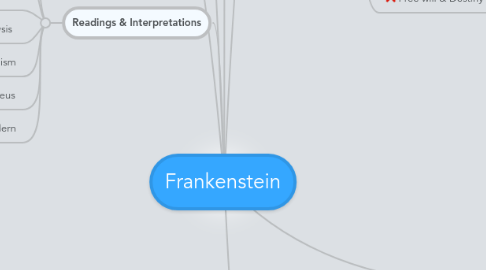Frankenstein
da eleonora pose sestini


1. Form & Structure
1.1. Epistolic techniques
1.2. Framed narrative
1.3. Reliability & focalization
1.4. Intertextuality
1.5. Paratextuality
1.6. Symbols
2. Language
2.1. Juxtapositioning
2.2. Figurative language
2.3. Irony
2.4. Pathos
2.5. Oxymoron
2.6. Rhetoric
2.7. Archetypes
2.8. Aporia
3. Characters & Relationships
3.1. Walton
3.2. Victor
3.3. The creature
3.4. Clerval
3.5. The DeLacey family
3.6. The Frankenstein family
3.7. harry
3.8. Minor characters
4. Readings & Interpretations
4.1. Contemporary reception
4.2. Feminism
4.3. MARXISM
4.4. Psycho-analysis
4.5. Structuralism
4.6. The references to Prometheus
4.7. Modern & Postmodern
5. Themes
5.1. The Monstrous
5.2. Man and Nature
5.3. The Doppelganger
5.4. Society & Justice
5.5. Sexuality & love
5.6. Science & ambition
5.7. Alienation & Isolation
5.8. Education & Language
5.9. Good & Evil
5.10. Gender
5.11. Birth & Death
5.12. the penetration's of nature's secrets
5.13. the overreacher
5.14. social prejudices
5.15. Parents & Children
5.16. Free will & Destiny
6. Context
6.1. Rousseau & the social contract
6.2. Hartley & Locke on education
6.3. Burke on the Sublime
6.4. Evolutionary theory
6.5. Galvanism
6.6. Materialism vs. Vitalism
6.7. Physiogomy & Phrenology
6.8. The French revoltion & social unrest
6.9. Romanticism
6.10. The Gothic tradition
6.11. William Godwin
6.12. Mary Wollstonecraft
6.13. Mary Shelley's biography
6.13.1. percy shelley
6.13.2. lord byron
6.13.3. doctor polidori
6.13.4. her sister claire
